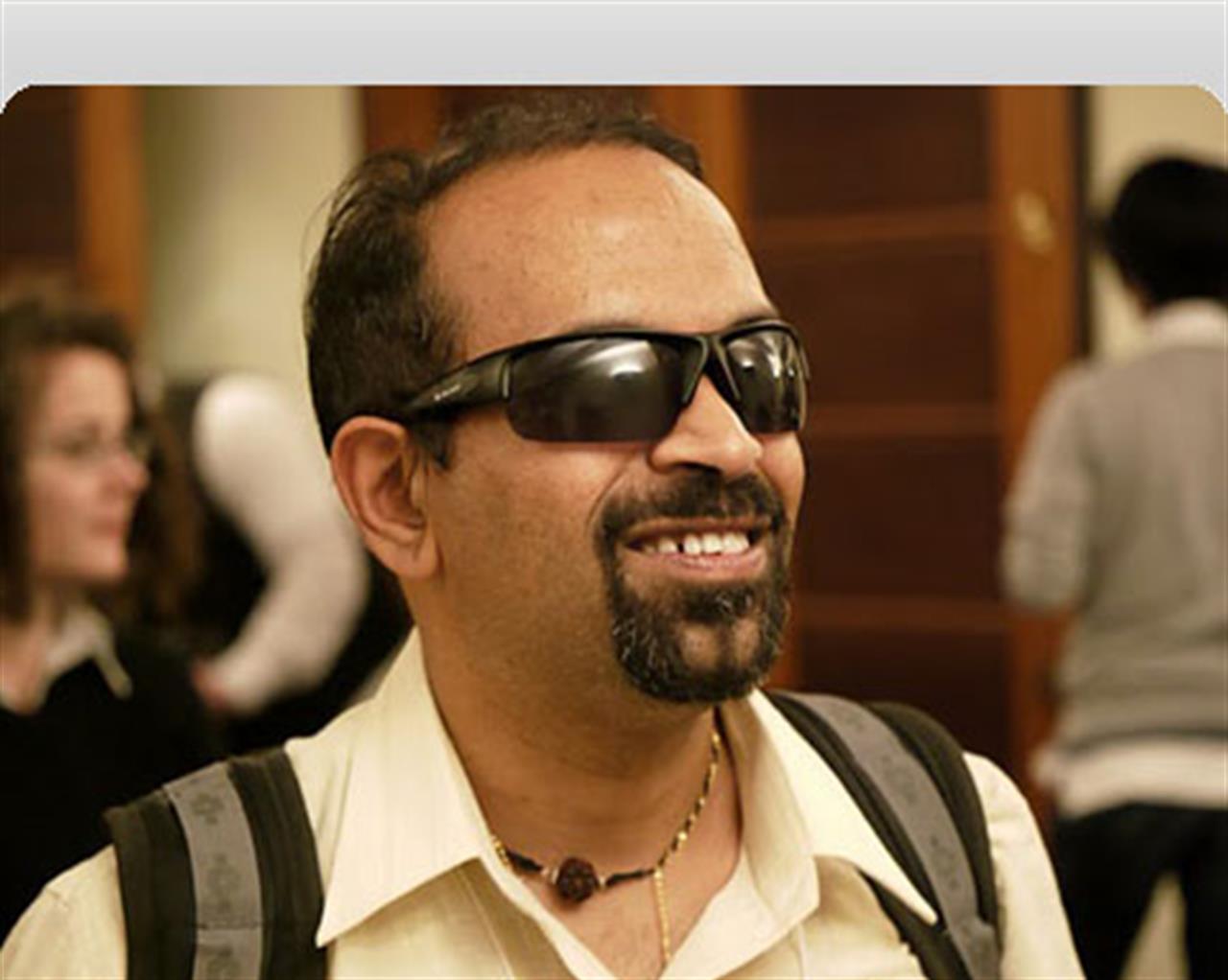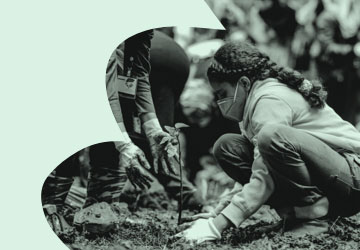Attivismo civico & Terzo settore
The eyes-free IT wizard
Technology can help people with disabilities to see, hear and move around the city with a click of the mouse. Literally.

There is a knack to finding catchy phrases that sound cool, offend no one and in two words manage to convey a whole philosophy and whoever came up with the term “eyes free” certainly had that knack. Just a step away from hands-free, eyes-free technology is a whole lot more fascinating because it delivers on the promise enclosed in its name. Its chief exponent is a 45 year old software engineer, T.V. Raman, who runs Google’s accessibility team and has developed some of mobile technology’s most innovative applications: touch screens you don’t have to look at, search results you can listen to and maps that read you the directions – meter by meter – to the nearest restaurant.
T.V. Raman, who was born in Pune, India and now lives in California, is an IT wizard. His favorite hobby is solving maths puzzles, in 1994 he won the prestigious Association for Computing Machinery (ACM) award for his PhD dissertation and he can solve the Rubix Cube in less than 30 seconds. He is also blind, which he says is very useful in his line of work: “I build it and use it and if it doesn’t work I know how to fix it”.
What projects are you working on at the moment?
Most of my work nowadays is focused on mobile technology and making it accessible to the blind. Mobile tech is the most exciting field to be working in because you are dealing with a powerful device that you can put in your pocket. Its with you all the time and what is more it has all kinds of sensors that allow it to interpret the world that surrounds it. To you the camera may just be something that lets you take pictures, but to me it is an eye. It has ears, it can speak and the GPS tells it where it is. It even has an acceleometer that tells it when it is being shaken. When you take all of this technology and connect it to the big thing up there called the internet, you can do truly amazing things.
Like?
Well, take Places, its an application we developed to integrate with Google Maps. Once it finds where it is you can select specific things you want to find – like restaurants – and it will tell you [literally, because it can speak the results] the ones that are closest to you. Not only where they are but how to get there. For somebody that can see, a map will do just fine but it wouldn’t work for me. I need something that will tell me where to turn and where to cross the road. This application does.
Don’t you need to be a bit of a technology geek to manage a phone you can’t see?
Not really. Take the eyes-free touchscreen dialler we developed. Precisely hitting a button on a touch screen is impossible if you can’t see, so our dialer works on relative positions. Wherever you first touch the screen is interpreted as a 5, to dial any other number you slide your finger up, down, left or right and to avoid mistakes the phone speaks the numbers you are dialling. If you do make a mistake you just shake the phone and start over. With a little practice anyone can learn to use it. And this isn’t something meant just for blind people but anyone who wants to be able to dial a number without looking at the screen – say you are jogging or driving or holding something.
But what about people who are really unfamiliar with technology, like the elderly, or people who have been alienated from technology by technology that was not accessible?
I think technology reaches that user base when it starts doing something really useful. If a new technology enables you to do something that you are unable to do right now then you will go out of your way to use it. People with special needs tend to be early adopters of technology – for example electronic shopping on the internet. Users who were house-bound were among the first to shop online because everybody else could get into a car and drive a store. It really is a function of how well the technology is packaged, how accessible it is, in the sense of: is it within your reach? Is it understandable to you?
What about the cost of the tools you make. Is that accessible too?
Yes. That’s what else is exciting about my work at Google. Both Android, which is the operating system used on Google phones, and Chrome, our web browser, are open source. Now as a developer this means that we can share our work with developers everywhere in the world. As a consumer, it means you can download all our applications for free.
Can you reveal any of your future projects?
Accessibility is often lumped together in the same box and what we want to do is target people’s specific needs rather than deal with accessibility as a whole. An elderly person with deteriorating vision isn’t the same as someone who is totally blind. Until recently, computing wasn’t a challenge to deaf people but with the advent of video it has become more so, we are tackling that by developing auto-captioning technology. Then there is the whole question of languages – how to make French websites accessible to English speakers, or an English video accessible to French speakers without having to rely on human translators. Our big goal is to innovate on the web for people with special needs and then spread those innovations across the web.
How do you define innovation?
It is often about asking the right question, making something that was thought to be impossible possible. Most people would say that a touch screen is something that just wouldn’t work for a blind person. Why not? Because they can’t see the numbers. But why can’t they see them? Because they are in a fixed place. So there’s your solution, make the location of the numbers flexible. And that’s the innovation. The rest – building the software – is just a consequence. Eyes-free technology is innovative because most things require you to see, so when you take sight away from the equation you think most things become impossible. Now we know they are not.
To find out more: www.google.com/accessibility

